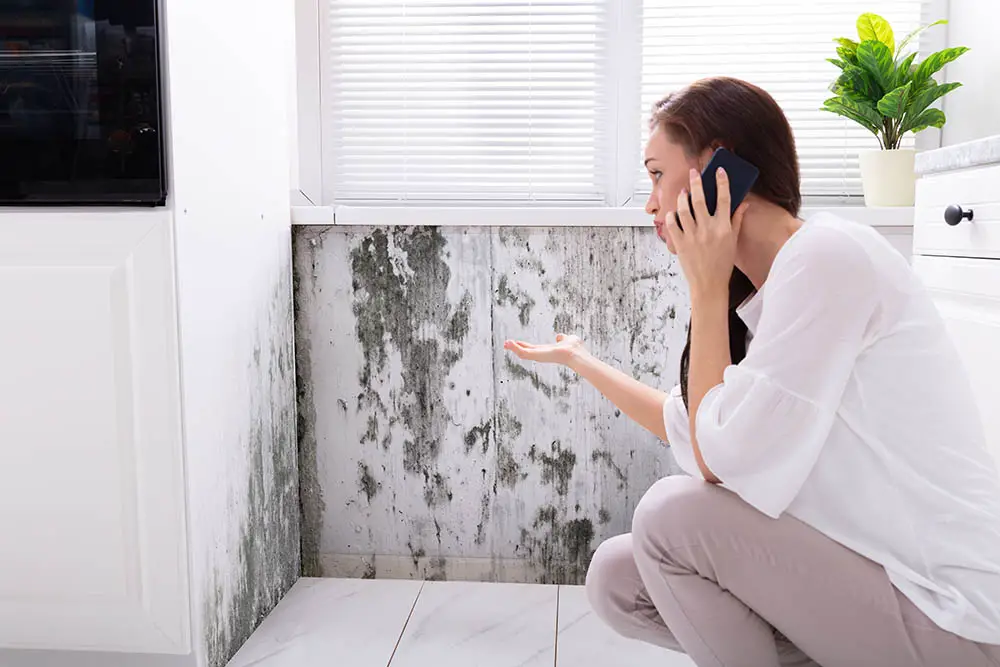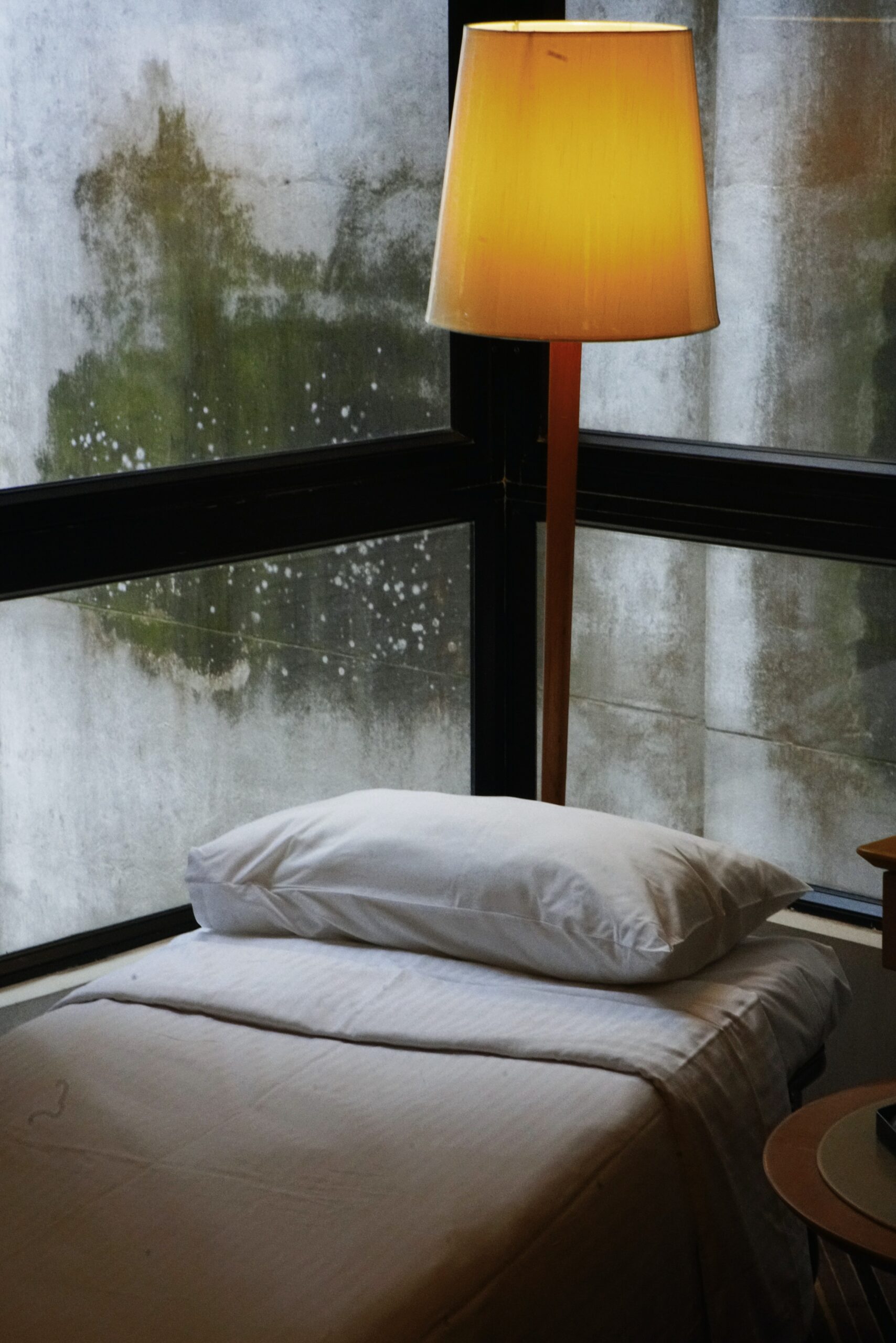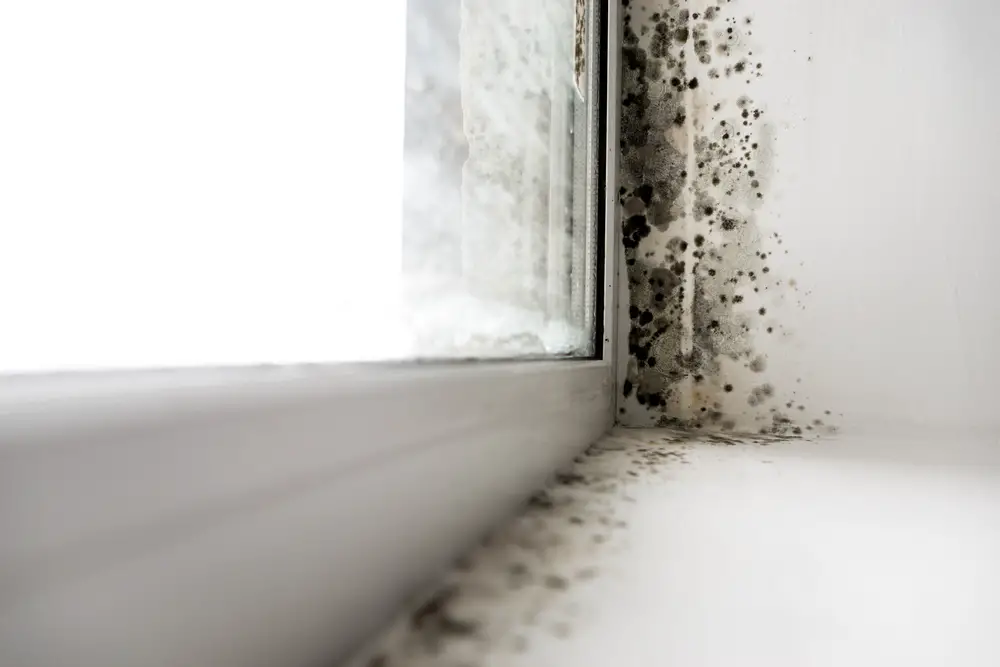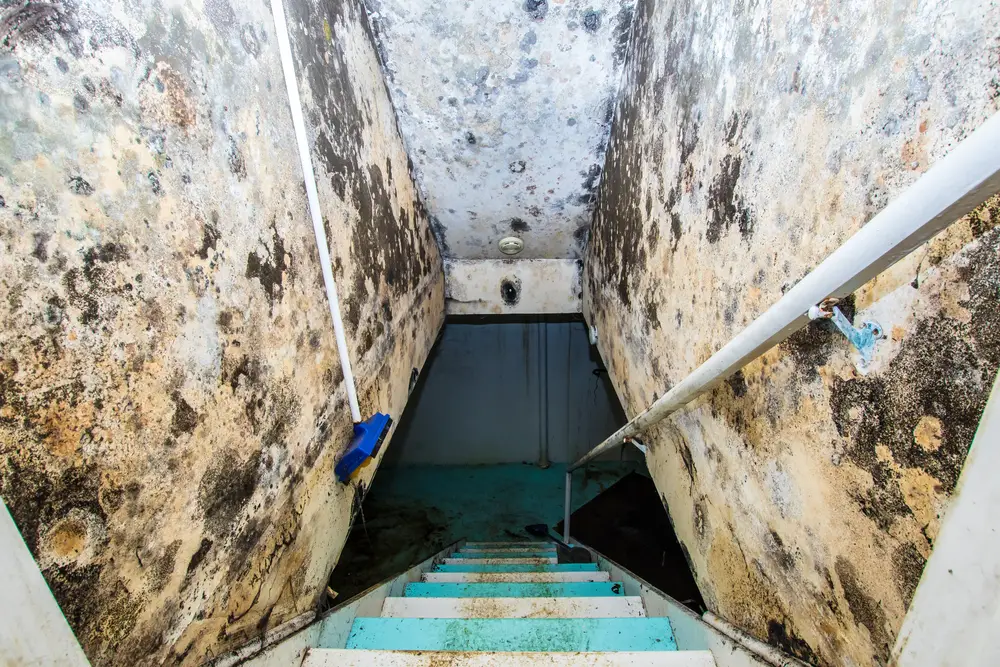Yes. You can paint Drylok over mold, however it should only be painted over once the necessary steps have been taken to treat and remove the underlying issue.
While Drylok is designed to prevent water from penetrating through foundation walls, it will not remove existing mold or mildew.
Simply ignoring the problem and painting straight over it is not recommended as it can only prevent further fungus from growing. Painting straight on top of mold or mildew can still cause issues in your home.
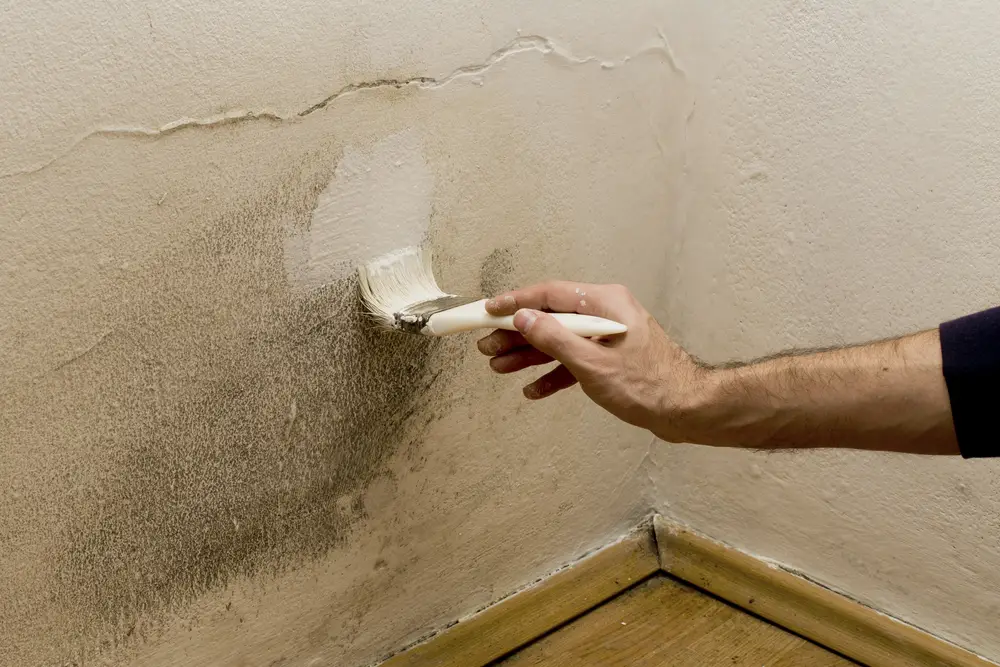
Hiding it under paint can solve the problem initially, but mold and mildew will always manage to resurface. That is why it is important you deal with it at the source.
Once you have identified the root of the problem, there are effective ways to remove the stains left behind.
So, first you must find where the moisture is coming from because you cannot kill mold or mildew with water-resistant paints and primers like Drylok alone.
You can easily treat it with a cleaning solution and scrubbing the marks off the wall or surface it’s living on.
Once it has been properly removed, you can go in with Drylok and paint over the clean wall. This should stop any more moisture from penetrating through and any mold or mildew returning.
To spot mold or mildew, look out for either black, gray, or brown spots on walls and surfaces or even white, orange and greenish/purple spots.
Check all doors and windows for leaks or tears in any insulation. You should also ensure you don’t have any other leaks in your bathtub, toilets or faucets.
Basically, identify anywhere that could be letting moisture in or where there could be a moisture build-up.
To prevent further damp, ensure the humidity level in every room is normal and the rooms are properly ventilated.
Condensation in bathrooms is a big contributor to mold and mildew so make sure you’re opening windows and turning on bathroom fans/ vents if you have them when using the shower.
It is also a good idea to do the same in the kitchen when cooking to avoid any moisture build-up.
Does Drylok prevent mold?
Yes, Drylok helps to prevent the development of mold and mildew because it is designed to prevent water from penetrating through foundation walls.
The product provides an ‘inert coating’ which means it does not promote the growth of mold or mildew. Additionally, Drylok Extreme consists of an additive called ‘mildewcide’ which acts to further prevent the potential for mold or mildew to grow under paint.
While materials like concrete and cinder blocks that often make up the foundation of our homes are solid, sturdy materials, they are actually very porous. This can be the perfect place for moisture to push through into your home, leaving ugly stains on your walls and surfaces.
Drylok works by penetrating these pores and creating a strong protective layer within the surface in order to block water from inside and outside your home, from breaking through the surface.
It’s important to distinguish though, that paint does not kill mold or mildew, and it will not destroy the source of the moisture.
If you do not resolve the issue in your home that is causing the build-up of moisture and creating mold, it will find a way to continue to grow somewhere else.
Before painting Drylok over a mold-infested area, use a cleaning solution such as bleach to scrub away the existing mold or mildew stains. Then, painting a masonry waterproofing material such as Drylok over the clean wall.
Once the stains have been removed, Drylok will prevent any further moisture penetrating the surface and causing mold or mildew to grow.
Mold and mildew are types of fungus that can be found pretty much anywhere. They thrive in places with lots of moisture such as bathrooms or rooms with poor insulation or high levels of humidity, causing damp.
If you think you have mold in your home, it will either look like black, gray, or brown spots on walls and surfaces or white, orange and greenish/purple spots.
The fungus thrives on anything with excess moisture and can spread alarming quickly, so it’s a good idea to spot it at the source as soon as you discover the problem.
It can also create air droplets that are easily inhaled which can be detrimental to your health, particularly if you have an underlying health condition. Inhalation can cause headaches, fatigue, nausea and breathing problems.
To find the source of the problem, ensure all doors and windows don’t have any leaks. Look for any tears in insulation too.
Also, check your bathroom for leaks in the bathtub, shower and faucets. Dealing with moisture build-up at the source will further help to prevent mold.
How to Remove Mold
Removing mold can be very tricky and generally lies on the extent of mold that you have in your home. If you are able to manage the mold in your home on your own, we recommend for you to get a high quality mold removal product. But if it's something that's widely spread out in your home you should consider hiring a professional to manage the process of mold removal.

